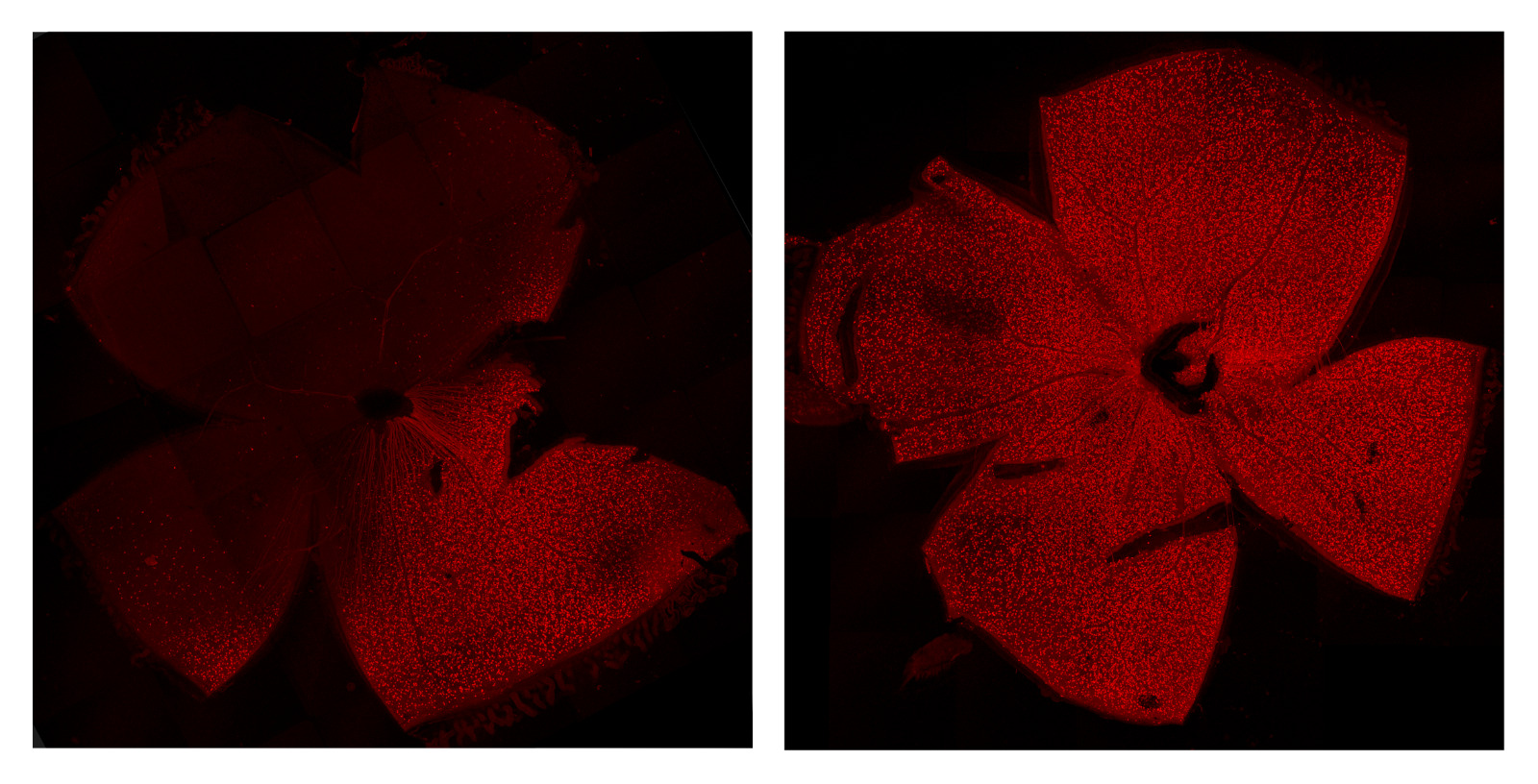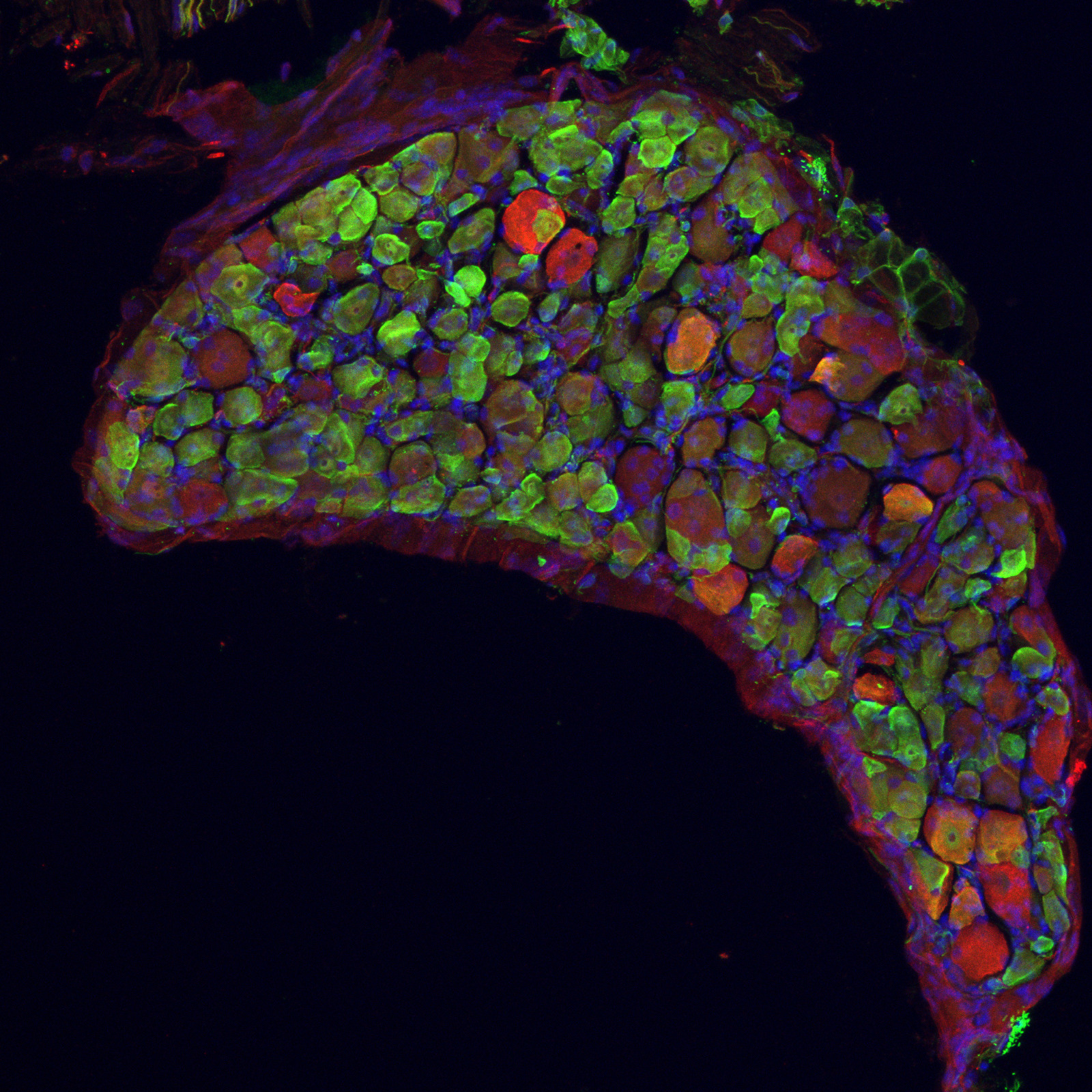Research Areas

Molecular genetic manipulations

Neuronal Transcriptomes

Visual Physiology/Behavior

Left (ipsilateral) and right (contralateral) retinas, labelled using retrograde tracking of ChTB-A555 by injection of the left Superior Colliculus (Edwin Humberto Hodelin Maynard)

Dorsal Root Ganglion from a Tusc5eGFP/eGFP mouse labelled anti-eGFP (green) and anti-TrkC (red) (Dan Domocos, Anamaria Lazar, Ana-Maria Taranciuc)
Meet our Team
Current Lab members

Tudor C. Badea, MD, MA, PhD
Group Leader
Vladimir V. Muzyka, PhD
Postdoctoral Fellow
Anamaria Lazar, PhD
Master Student
Raluca Pascalau, MD
PhD Student
Edwin Humberto, MD
PhD Student
Diana Petre, MSc
Research Engineer
Ileana Daria Madan
Undergraduate student
Gisselle Fernndez Peña MD
Graduate student
Adina Teodora Rosca, Msc
Graduate student
Aloyma Veliz, MD
Graduate studentFormer Lab members

Ana Maria Taranciuc (Sisman), MD
Clinical Laboratory resident
Vlad V. Vochitu, MD
Graduated Med. School 2023
Malina Barbu
Medical Student (6th year)
Oana Monica Leah
Medical Student (6th year)Facilities Equipment
ICDT
Institute/Molecular Genetics & Neuroscience Lab
BEAM
Small Animal Experimental Facility
Current Funding and Projects
Collaborations
- Anand Swaroop - NEI - Genomics and retina transcriptomics
- Samer Hattar (NIMH)/ Phyllis Robinson (UMBC) - ipRGCs
- Horea Rus, Violeta Rus, Alexandru Tatomir (UMAB) & Sonia Vlaicu (UMF Iuliu Hatieganu) - role of RGC-32/Rgcc in inflammatory diseases.
- Ching-Hwa Sung (Cornell Weill medical School) - functional analysis of retinal disease models
- Daniel Kerschensteiner (WUSTL) - RGC types development and function
- Greg Schwartz (Northwestern U.) - RGC physiology in health and disease
- Brian Brooks (NEI) - Animal models of Coloboma and Albinism
- Chai-An Mao (UTHSC) - transcriptional control of RGC type development
- Sef Lucr. Dr. Vlad Monescu - Bioinformatics Analysis
- Conf. Dr. Sorin Grigorescu - Vision-inspired AI approaches.


